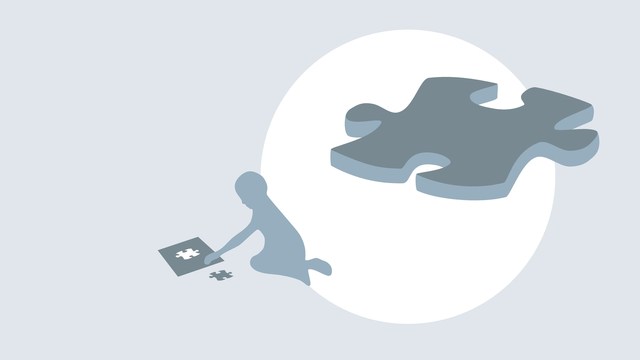In the United States, over two million people have had an unprovoked seizure or have received the diagnosis of epilepsy, according to the National Institute of Neurological Disorders and Stroke. With epilepsy, patients have disrupted electrical activity in their brains. Several types of seizures exist, which have different symptoms. Epilepsy can occur in both adults and children: around 300,000 children under age 14 have epilepsy in the United States, noted the Epilepsy Foundation.
Another disorder that starts in childhood is autism. The National Institute of Neurological Disorders and Stroke noted that out of every 1,000 children, three to six of them will have an autism spectrum disorder. With autism spectrum disorders, patients have impairments with social interaction, repetitive behaviors and problems with communication. The severity of autism spectrum disorders can range from mild with Asperger's syndrome to severe with autism, also called classical autism spectrum disorder.
Several studies have looked at the connection between autism and epilepsy, as patients can have both disorders: 10 to 30 percent of patients with autism also have epilepsy, according to Lidia Gabis, John Pomeroy and Mary R. Andriola, authors of “Autism and Epilepsy: Cause, Consequence, Comorbidity or Coincidence?” In their retrospective review of electroencephalography (EEG) data, Gabis, Pomeroy and Andriola looked at 56 children who had pervasive developmental disorders, which is another name for autism spectrum disorders. They found that the prevalence of epilepsy in autistic patients corresponded to previous studies that found that these two conditions are comorbid. The authors also found that that the rate of epilepsy was higher in girls who have epilepsy compared to boys with the disorder.
In a study conducted in Canada at the CHUM Research Centre, researchers found a genetic link between autism and epilepsy. The study found that a mutation of the synapsin gene, SYN1, which was found in patients with both epilepsy and autism. ScienceDaily reported that the study, which was led by Dr. Patrick Cossette, a neurologist, included a large French-Canadian family and two cohorts from Quebec. The synapsin gene's role in the body is being involved in the development of the synaptic vesicles, which store neurotransmitters that are then released at the synapse of a neuron.
Some patients who have both disorders may have treatment-resistant epilepsy, according to a study that collected data from the NYU Comprehensive Epilepsy Center. The study consisted of records from 127 children and adults over 20 years who have autism as well as one or more seizures. Jenifer Goodwin from HealthDay reported that around 34 percent of the patients in the study had epilepsy that did not respond to medications, while 28 percent did not have seizures after receiving treatment; the remaining 39 percent could not be categorized as treatment-resistant or not due to a lack of sufficient information. Other finds that came out of this study include that patients who had treatment-resistant epilepsy had their first seizure around age 6, while the patients with treatment-responsive epilepsy had their first seizure around age 11.
Another study on patients with both epilepsy and autism found that they have a higher death rate compared to patients who have just autism. The study used brain tissue from the Autism Speaks Autism Tissue Program, and 39 percent of the donor tissue came from patient who had both disorders. Robert Preidt of HealthDay reported that the study that also used data from the California State Department of Developmental Services discovered that the death rate in patients with both disorders is 800 percent higher compared to patients with autism without epilepsy.
References
National Institute of Neurological Disorders and Stroke. Autism Fact Sheet. National Institutes of Health, 2011. Web. 25 May 2011
http://www.ninds.nih.gov/disorders/autism/detail_autism.htm
National Institute of Neurological Disorders and Stroke. Seizures and Epilepsy: Hope Through Research. National Institutes of Health, 2011. Web. 25 May 2011
http://www.ninds.nih.gov/disorders/epilepsy/detail_epilepsy.htm
Goodwin, Jenifer. Many With Autism Also Have Treatment-Resistant Epilepsy: Study. HealthDay, 20 April 2011. Web. 25 May 2011
http://consumer.healthday.com/Article.asp?AID=652049
Preidt, Robert. Having Both Autism and Epilepsy Linked to Raised Death Rates. HealthDay, 15 April 2011. Web. 25 May 2011
http://consumer.healthday.com/Article.asp?AID=651985
ScienceDaily. Common Genetic Cause of Autism and Epilepsy Discovered. 8 April 2011. Web. 25 May 2011
http://www.sciencedaily.com/releases/2011/04/110408075031.htm
Gabis, Lidia, Pomeroy, John and Andriola, Mary R. Autism and Epilepsy: Cause, Consequence, Comorbidity or Coincidence?. Epilepsy and Behavior, 24 October 2005. Web. 25 May 2011
http://www.epilepsyfoundation.org/epilepsyusa/yebeh/upload/autismandepilepsy.pdf
Epilepsy Foundation. Children. Web. 25 May 2011
http://www.epilepsyfoundation.org/answerplace/Life/children/
Reviewed May 25, 2011
Edited by Alison Stanton






Add a CommentComments
There are no comments yet. Be the first one and get the conversation started!